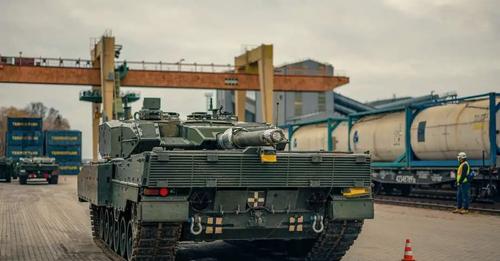Canada has completed the deployment of Leopard 2 tanks in Latvia to bolster NATO mission in Eastern Europe.
The Canadian media reported on this with reference to the Department of National Defense of Canada.
The planned deployment was announced in June when then Defense Minister Anita Anand shared that the squadron would strengthen the NATO alliance’s deterrence capabilities.
The squadron of Leopard 2 tanks arrived in Latvia on November 10, along with a detachment of support personnel and equipment.
The Leopard 2A4M CAN is a Canadian modernized version of the German main battle tank. It received improved armor protection and electronics.
In particular, the tank was fitted with a set of additional composite armor on the turret, frontal hull, and sides, which provides protection against anti-tank grenades, guided missiles, and dart ammunition. The tank’s mine protection was also brought up to the Leopard 2A6 level.

Instrumentation, including the fire control system, new fully electric turret rotation mechanisms, and gun stabilizers, has been updated. An electronic radio jamming system was also integrated to protect against radio-controlled explosive devices.
The total weight of the Leopard 2A4M CAN has increased to 61.8 tons. Thanks to its 1500 hp engine and advanced suspension system, it can reach a top speed of approximately 65 km/h and cover a distance of approximately 550 km.
Reinforcement on the Latvian border
The practice of deploying troops and equipment to allies in a tense region is normal for North Atlantic Alliance member states.
In addition to tanks, M142 HIMARS rocket systems of the 321st Field Artillery Regiment under the command of the 1st Infantry Division of the US Army were also deployed to Latvia in September this year.
Last June, Spain deployed a battery of the NASAMS air defense system in Latvia as part of strengthening NATO’s eastern borders.

All the processes of strengthening the military grouping on the borders are linked to Russia’s invasion of Ukraine and growing tensions in the region.
